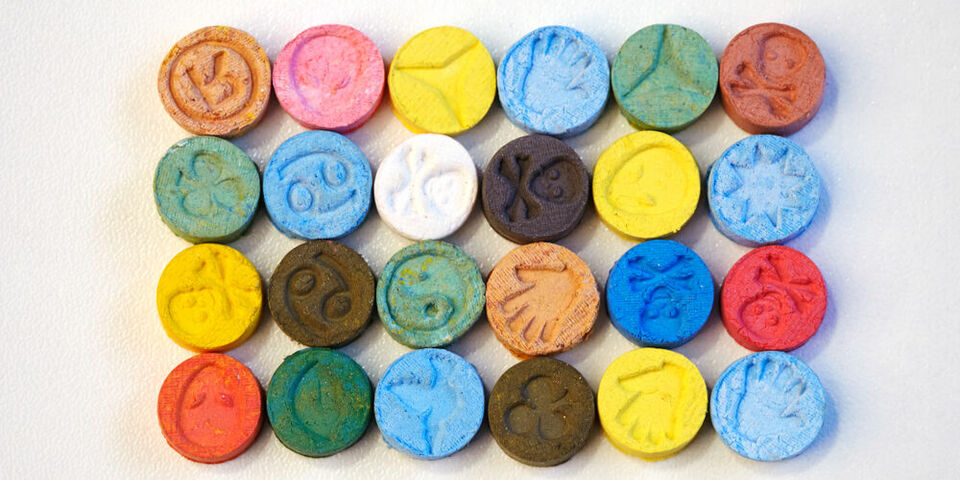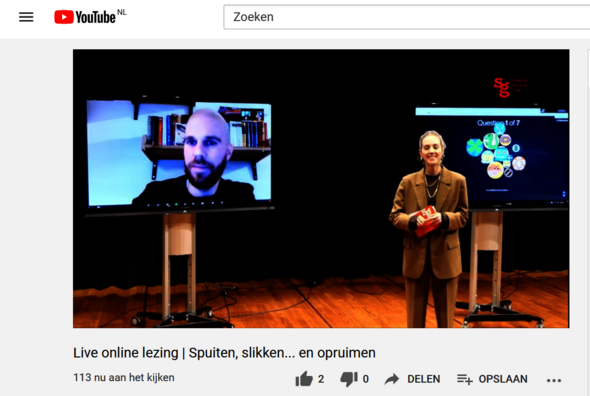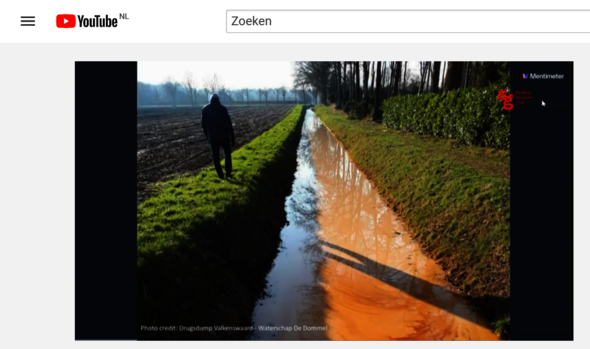Snorting, shooting and inhaling, but who does the cleaning?
The drugs industry continues to flourish in the Netherlands, despite corona. Synthetic drug production leads to waste that often simply gets disposed of in the natural environment or in sewers. Who ends up paying for the damage, and who does the cleaning? And do end-users bear responsibility as well? On Thursday evening 26 November, Studium Generale organized a lecture about drugs crime in the Netherlands.
“There is no Max Havelaar (fairtrade) Ecstasy, unfortunately,” says investigative journalist Bram Endedijk, author of several books, including ‘We regelen het zelf wel,’ about drugs crime in rural Brabant. Endedijk was one of the participants in an online discussion, organized by Studium Generale and the Trimbos Institute, together with Nellie Benner (BNNVARA Drugslab), criminologist dr. Lieselot Bisschop, and Alex van Dongen (prevention worker at Novadic-Kentron).
The lecture suffered from a few technical problems. A grey screen at 20:07 hrs. makes you wonder whether you’re in the right place. At least you don’t need to worry about these things when you attend a lecture in the Blauwe Zaal. Still, the fact that 79 other people on YouTube are also waiting for confirmation, makes you realize that you’re not the only one who missed a message. But patience is a virtue, it turns out.
Finally, the evening commences at a quarter past eight and we hear a story about farmers who stack their stables not with bales of straw but with entirely different things. “They get offers on a regular basis, ranging from amateurs with a couple of plants to professionals in suits who want to run synthetic factories. I followed around a policeman, Freek, for some time, whose job it was to find out who was responsible for dumping waste from drugs. He would receive a phone call from someone telling him ‘the water there is polluted and acidified.’ We then went looking upstream, from well to well. The last well that was still polluted had to be in the vicinity of the dump site. Three farms seemed suspect. The first two were regular farms, but the third one turned out to be a speed factory with an enormously high production rate. The police investigation and clean up of the damage cost about one hundred thousand euros. And it’s the tax payer who eventually ends up paying for it.”
Criminologist Lieselot Bisschop concerns herself with (environmental) crime. “Pollution and waste is my main area of research. Who is responsible for drugs waste, and how far does that responsibility reach? When our waters are polluted and it spills into the North Sea, are we responsible for those areas as well? And then there are the costs of the damage: studies often don’t contain actual calculations, because how much is a blade of grass worth, or a tree?”
The role of end-users in the drug chain
Prevention worker Van Dongen notices the high rate of drug use among students. “We see many people between the ages of 20 to 24 at our test service. You can test your Ecstasy pill there, for example, and we’ll tell you the substance, in order to prevent people from suffering too much damage to their health from taking hazardous drugs. We also educate high school students who claim to be environmentally conscious but who often fail to realize that you need to cut down a rainforest to produce cocaine. It’s important to tell students the whole story and not just to focus on the risks of drug use. In my experience, that only triggers people to try it out, whereas the stories about the environment actually help make drugs seem less attractive.” Bisschop agrees with him. “You need to show the whole chain, and make everyone aware of their own role. Because that allows people to make a well-considered decision about whether or not to use drugs.”
Solutions
The audience has more than enough questions for the speakers. Such as ‘shouldn’t we make more plant-based dugs instead of synthetic drugs, if that will cause less damage to the environment?’ Bisschop: “That might not be such a bad idea. A nice spin actually, a different approach. But you still need to think about how those kinds of drugs are produced and financed.”
What’s the most environmentally sound way to handle drugs waste?Shouldn’t we just store it legally? Bisschop: “I think the best way would be to tackle it indirectly through financial flows. The money generated in the drugs industry is used for investments in other sectors. You need to break that chain.”
Who is guilty, the end-user of the producer? Bisschop believes that everyone shares co-responsibility. “Whether you’re a buyer or a producer, everyone makes a small contribution, like a segment of a chain.”
The many questions directed at Endedijk are proof that the viewers are clearly fascinated by his work. Is it easy to come into contact with drug criminals? “Not easy,” he says, “but easier for me than for the investigation services.” Who are these people? “There are different groups. Some people work in a lab. I think of them as society’s losers, people in trouble, with debts. They get paid a few hundred euros a day to work in a lab surrounded by toxic fumes. The second group is the middle management, they maintain contact with the people working in the labs. And then there are a few families at the top who operate the labs. They’ve developed themselves to such an extent these last few years that is has become virtually impossible to arrest them for criminal offences, because they don’t work in the labs, but control the whole operation with money flows. This is one of the points of criticism directed at the investigation services: they focused on the labs for too long instead of on the money flows. More financial investigation is needed.”
Healthy
Just how much impact the lecture had isn’t quite clear. Afterwards, a large majority of viewers agrees with the following statement: “Incidental use of illegal drugs fits perfectly with a healthy and responsible lifestyle.”
Would you like to watch this lecture? You can, but it’s available in Dutch only. We published an earlier article about the Netherlands as a top player in the international world of synthetic drug production.




Discussion